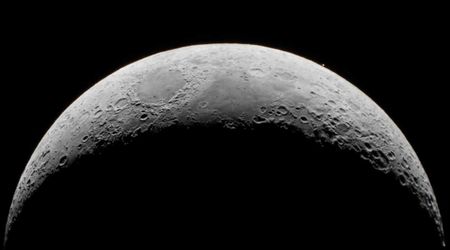NASA begins stacking Artemis II amid uncertainty over SLS budget

NASA is moving forward with Artemis II, aiming for the first crewed flight near the Moon since 1972, with a current launch target of April 2026 that could shift to February if things go well. Despite this progress, the SLS and Orion programs face potential termination after the Artemis III mission, according to the proposed NASA budget for Fiscal Year 2026, as reported on NASA Spaceflight.

NASA's recent Fiscal Year 2026 budget request has proposed funding for the Artemis II and III missions, which are critical steps in returning humans to the vicinity of the Moon. However, the same budget outlines a significant shift in direction, aiming to cancel all subsequent SLS missions from Artemis III onwards. This proposal also includes the termination of the development of the SLS Block 1B and Block 2 vehicles, impacting related projects such as the Exploration Upper Stage and Bole. Furthermore, the future of the human-tended cis-lunar Gateway space station is also uncertain under this proposed budget.
The submission of this initial budget request to the United States Congress marks the beginning of a potentially lengthy and complex legislative process. Both the House of Representatives and the Senate will need to review and approve the budget before it can be enacted into law. The proposed budget also includes a substantial reduction in NASA's overall funding, decreasing it from $25 billion to approximately $19 billion. Detailed breakdowns of these proposed cuts are expected to be released at a later date, providing further insight into the potential impacts across various NASA programs. Congressional support will determine the fate of these proposed NASA budget cuts. Representatives from states with affected SLS facilities and other NASA projects are expected to voice concerns during budget talks. The final budget outcome will reflect these negotiations and Congress's priorities.
NASA has completed the stacking of the two five-segment solid rocket boosters for Artemis II missions on Mobile Launcher 1, starting in November 2024 and concluding on February 19 with the installation of the forward assemblies, which are nose cones, avionics, and separation motors. The only remaining components to be integrated are the Orion spacecraft and its ascent abort motor fairing. These solid rocket boosters, a heritage design from the Space Shuttle program's 135 flights, were originally certified for a stacking duration of no more than one year before flight. To address this, NASA conducted studies and granted waivers before the Artemis I launch, based on their assessment of the structural integrity of the stacked boosters over extended periods.

The core stage of the SLS, which was being prepared in High Bay 2 of the Vehicle Assembly Building (VAB), was moved to High Bay 3 on March 23 and stacked between the solid rocket boosters, where Mobile Launcher 1 is located. Subsequently, on April 3, the team lifted the Launch Vehicle Stage Adapter (LVSA), the component that joins the core stage to the upper stage, known as the Interim Cryogenic Propulsion Stage (ICPS). The connection of these two stages was finalised on April 12 with the completion of the hard mate, as mentioned by the outlet.









